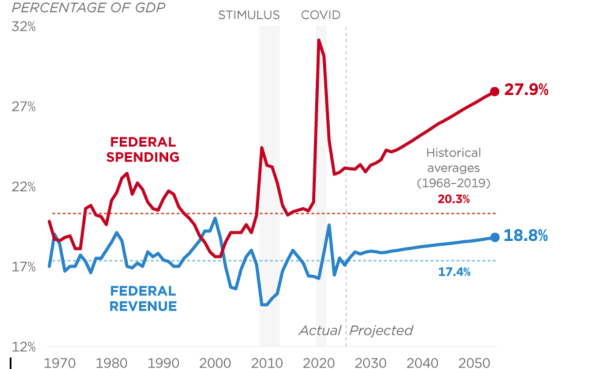The first FDA-approved artificial pancreas gives new hope
Each year, roughly 40,000 people, 15,000 of which under the age of 18, are diagnosed with type-1 diabetes in the United States. Unlike type-2, type-1 is an incurable life-threatening autoimmune disease in which the body’s immune system attacks insulin-producing cells in the pancreas. Insulin is a hormone that allows the body to use sugar as energy, and helps keep blood-sugar levels from getting too high or too low, both of which can be life-threatening. Scott Snyder, the head boy’s soccer coach here at Westminster, was diagnosed with type-1 diabetes at the age of 36.
“Within one week I lost probably ten pounds,” Snyder said. “I was constantly going to the bathroom and constantly thirsty. I couldn’t go more than twenty minutes without having to go to the bathroom. That was a big sign.”
The leading symptoms of diabetes are frequent urination, constant thirst and hunger despite frequent hydration and eating, extreme fatigue, blurry vision, and weight loss.
“In the beginning, when I first got diabetes, I was depressed,” Snyder said. “I was teaching here and couldn’t read, because it messed up my eyes. No one sent me to the hospital, they just gave me a bunch of instructions and sent me on my way. I just didn’t realize how carbs are in everything, and I remember going to the cafeteria to figure out what I was going to eat. Then I had to calculate how many carbs were in it, give myself an insulin shot, and then go back in and actually eat.”
In the 1950s, about one in three people died within 25 years of a type-1 diagnosis. Today, due to advances in the treatment of type-1, only one in 20 people die within 25 years of a diagnosis. The Juvenile Diabetes Research Foundation (JDRF) leads the research effort to cure type-1 diabetes.
“The purpose of JDRF is to bring together our communities to raise awareness and funds to support research and ultimately find a cure for those with type-1 diabetes,” said Lauren Kennedy, the director of development at JDRF. “JDRF was created by parents who wanted to find a cure for their children.” In total, JDRF has invested two-billion dollars into research.
On September 28th the Food and Drug Administration (FDA) approved the first artificial pancreas, which was developed by a long-time leading manufacturer of insulin pumps, Medtronic. The final preparations are in the works and the system should be readily available in spring of 2017.
“I have heard so much excitement from families about the new Medtronic MiniMed 670G closed loop system,” said Kennedy. “This and other more advanced artificial pancreas systems currently in development can dramatically improve the health and quality of life of people living with type-1 diabetes. This system is designed to reduce blood-sugar highs and lows, especially at night, which we know can be particularly dangerous.”
The artificial pancreas system fuses two existing technologies, an insulin pump and a continuous glucose monitor, together with a computer algorithm that allows automatic delivery of insulin.
“I know two trial participants,” said Kennedy. “The first is a woman in her twenties who has raved about the system and how it has taken the guess work out of type-1 diabetes for her. I also know an eight-year old girl who is currently in a local trial for children. She is excited about it as well, saying it simplifies her day. Her mom said she would double check her blood-sugar levels in the middle of the night just to confirm it was as consistent as the readings were indicating and it was always right on track!”
Multiple artificial pancreas systems are currently in commercial development. Animas, Bigfoot Biomedical, Insulet, Roche, and Tandem Diabetes have all announced that they are developing hybrid closed-loop systems. In total there are 18 sophisticated artificial pancreas systems in development around the world, most of them underwritten in some way by JDRF.
“For me, one of the most annoying things about having diabetes is the constant need to count carbohydrates and manually calculate how much insulin I have to give myself for every meal.” said Evan Katz, a Westminster alumnus (2015) who was diagnosed with type-1 at the age of 2. “An automated insulin delivery system like the the artificial pancreas would take a significant amount of the burden off of me and make staying on top of diabetes much easier.”
The most recent study found that Medtronic’s device keeps people with type-1 within a desired blood-sugar range 72 percent of the time. Although the device is not fully automatic, it also significantly reduces the stress-level of users by allowing them to worry less about their insulin intake.
“As we step closer to finding a cure for type-1 diabetes, improving the quality of life for our families is equally important,” said Kennedy. “Many families have commented to me that an artificial pancreas system that allows them to ‘forget’ about diabetes for a minute or a day is huge progress; they cannot even imagine not having to worry for 6 months to a year.”
It may not be a cure but the artificial pancreas is a huge advancement in the treatment of type-1 diabetes. And who knows, with support and research funded by JDRF a cure may not be too far away; something a hopeful diabetic community prays for every day.




